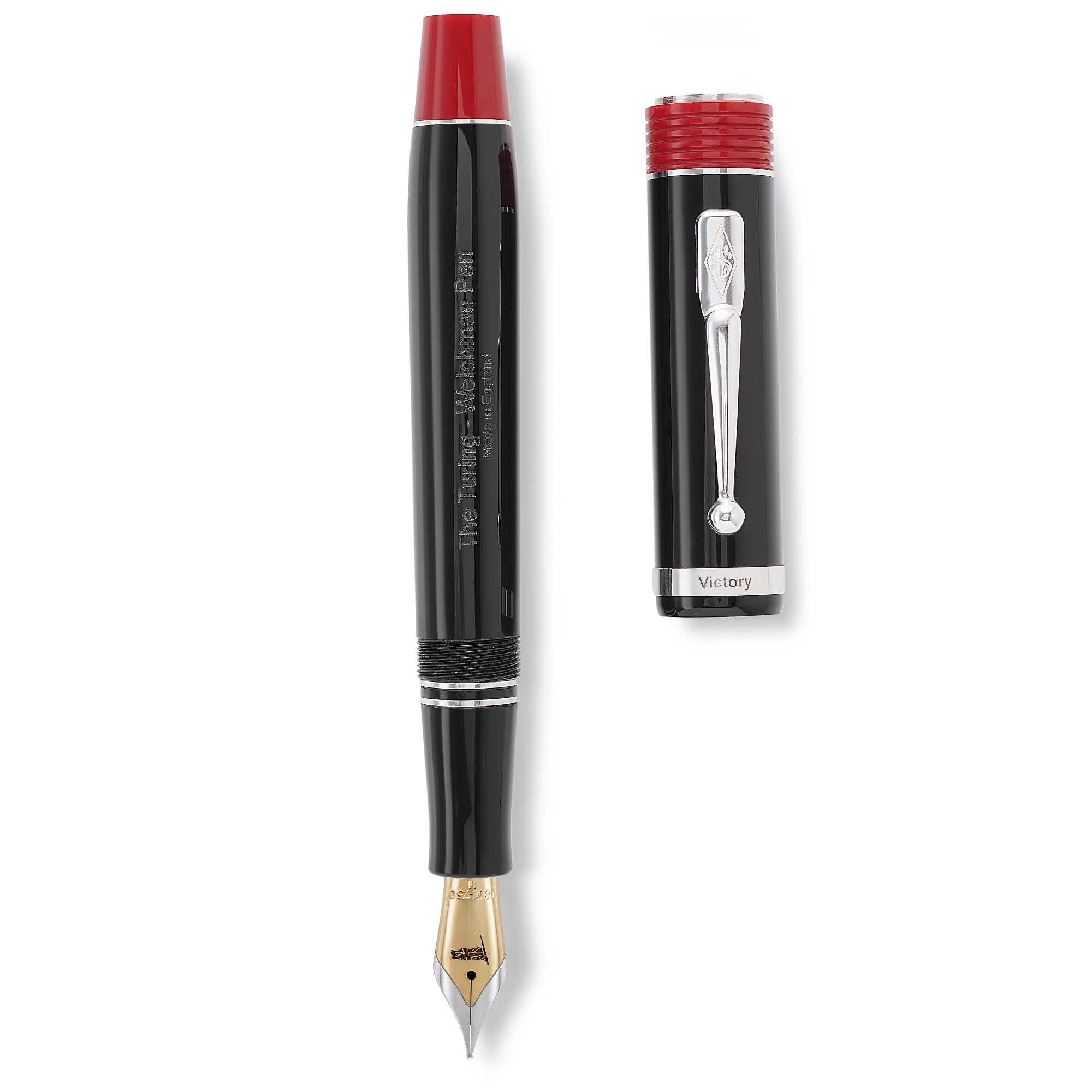Turing-Welchman Bombe limited-edition pens and anniversary videos released
/211 limited-edition Turing-Welchman Bombe pens
Videos of 80th Bombe anniversary released
Limited-edition Turing-Welchman pens are being offered by The National Museum of Computing to celebrate the 80th anniversary of the arrival of the first Turing-Welchman Bombe to break Enigma messages on Bletchley Park. All profits will assist the museum to recover from the current shutdown.
A total of 211 pens – equivalent to the number of Bombes built during the war – are being offered via the TNMOC shop.
Each pen – fountain or roller-ball – has its own individual number engraved on the end of the UK-hallmark sterling silver barrel which resembles and rotates like a drum on a Turing-Welchman Bombe machine. The barrel is engraved ‘The Turing-Welchman Pen’ and the name of the first Bombe, ‘Victory’ on the cap. Each pen, presented in a beautiful presentation box, has a secret compartment to hide a message to your loved one or descendants.
Sir Dermot Turing, nephew of Alan Turing and acknowledged Bombe expert, was presented with the first Turing-Welchman Bombe pen by Museum Director Jacqui Garrad, at the 80th anniversary celebration of the Bombe at The National Museum of Computing on 14th March 2020.
Sir Dermot Turing said “I am truly delighted to have received the first – number one – in the limited-edition series of Turing-Welchman pens celebrating the 80th anniversary of the first Bombe arriving at Bletchley Park. The pen is not only a splendid tribute to the engineering and code breaking effort represented in the Bombe but it is also very elegant and useful. I congratulate The National Museum of Computing for issuing such a prestigious product.”
Chairman of TNMOC, Andrew Herbert, said, “These are beautiful pens so I will be keen to sign on the dotted line to buy one. We are very grateful to the manufacturers and sponsors – we could never have known how valuable it would be to the Museum’s future to release these pens at this time.”
The 211 limited-edition pens have been produced by Bespoke British Pens and sponsored by the digital transformation and cyber specialists, Issured.
The Turing-Welchman Bombe was the electro-mechanical device designed by Alan Turing and Gordon Welchman, based on a Polish concept, to automate the deciphering of Enigma-encrypted messages during the second world war. By the end of the war, there were 211 Turing-Welchman Bombes helping to decipher 5000 enemy military messages each day and thereby making a huge impact on the outcome of the conflict. The reconstructed Bombe is at The National Museum of Computing.
Bombe’s 80th anniversary videos
As part of the 80th anniversary celebrations, two of the leading experts on enigma code breaking; Dr Marek Grajek and Sir Dermot Turing gave an insight into events leading-up to the delivery of the first Bombe to Bletchley Park.
Part One - Dr Marek Grajek – The Polish Contribution
In the following video from the event, Dr Marek Grajek explains the contribution that the Polish code breakers played in the concept and engineering of the Bombe.
Dr Marek Grajek – The Polish Contribution
Part Two – Sir Dermot Turing – Tracking Turing’s Design
In the following video from the event, Sir Dermot Turing explains the ‘hardware problem’ and ‘software problem’ analogy and the timeline of those involved which lead to design of the first Turing-Welchman Bombe.
Sir Dermot Turing – Tracking Turing’s Design
Notes To Editors
About The National Museum of Computing
Note: Museum is currently closed until further notice due to Coronavirus. We hope to open again soon.
The National Museum of Computing, located on Bletchley Park in Block H, one of England’s ‘irreplaceable places’, is an independent charity housing the world's largest collection of functional historic computers, including reconstructions of the wartime code-breaking Colossus and the Bombe, and the WITCH, the world's oldest working digital computer. The Museum enables visitors to follow the development of computing from the ultra-secret pioneering efforts of the 1940s through the large systems and mainframes of the 1950s, 60s and 70s, and the rise of personal computing in the 1980s and beyond.
The Museum runs a highly successful Learning Programme for schools and colleges and promotes introductions to computer coding amongst young people to inspire the next generation of computer scientists and engineers.
Sponsors of the Museum have included Bletchley Park Science and Innovation Centre, Fujitsu, InsightSoftware.com, Paessler AG, Sophos, Issured, Lenovo, Bloomberg, Ocado Technology, 4Links, Google UK, IBM, NPL, HP Labs and BCS.
For more information, see www.tnmoc.org and follow @tnmoc on Twitter and The National Museum of Computing on Facebook.










